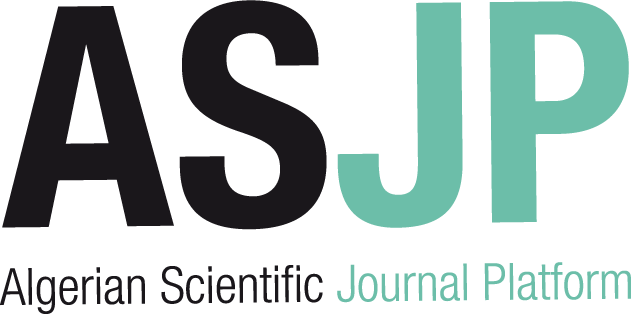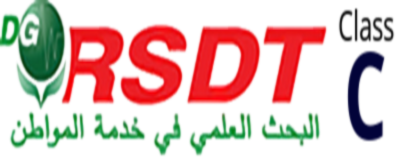Instructions for Authors
Publication Guidelines
Regarding article submissions, the journal's editorial board requires authors to strictly adhere to the following guidelines :
1. Originality: Submitted articles must be original and demonstrate their contribution to the advancement of scientific knowledge.
2. Article Length: Articles must be between 12 and 18 pages (between 35,000 and 50,000 characters, including spaces). This length includes footnotes, bibliography, and illustrations. The editorial board reserves the right to reject any article that does not meet this length requirement.
3. Metadata
Author Information: Full name, position and rank, institutional affiliation, institutional email address, and ORCID code.
Article Title: Each title must be translated into English.
Abstracts: One abstract in the language of the article and another in a third language (each abstract must be between 2,900 and 3,100 characters, including spaces). The abstract must include the objectives, the research question, and the methodology. Keywords for bilingual indexing (4 keywords)
4 Introduction: In addition to the other elements, it must include: a presentation of the topic and its importance, the research question, a literature review, and a description of the theoretical methodology used.
5 Conclusion: It must include a summary of the results and suggestions for future research.
6 Writing style: Latin font Times New Roman, size 12, single-spaced. Arabic font [font size missing], size 14, single-spaced.
7 Margins of 4 cm.
8 The following phonetic transcription system is used.
Vowels: a, ā, e, ë, i, ī, u, ū. The hamza is not written at the beginning of words.
|
ء |
ب |
ت |
ث |
ج |
ح |
خ |
د |
ذ |
ر |
ز |
س |
ش |
ص |
|
|
ā |
ʾ |
b |
t |
th |
j |
ḥ |
kh |
d |
dh |
r |
z |
s |
sh |
ṣ |
|
ض |
ط |
ظ |
ع |
غ |
ف |
ق |
ك |
ل |
م |
ن |
ه |
و |
ي |
|
|
ḍ |
ṭ |
ẓ |
ʿ |
gh |
f |
q |
k |
l |
m |
n |
h |
w / ū |
y / ī |
9 To make these words plural, one can choose between giving the Arabic plural (qaṣīda, pl. qaṣā’id) or adding the French “s” after a hyphen, in vertical case: qaṣīda-s
However, when a word is in French dictionaries, it is possible to adopt the spelling given therein; the word then agrees according to the rules of the French language and is not in italics. Examples: souk, plural souks; zaouïa, plural zaouïas; imam, plural imams; uléma (or ouléma), plural ulémas (oulémas).
10. Footnotes: Footnotes are numbered sequentially at the bottom of the page and are limited to essential information (explanations or press articles only, when bibliographic references are included in the text). The footnote marker must be placed above the preceding word, not above a punctuation mark. Example: 1. Must be joined. Not: Must be joined.
11. Bibliographical references are integrated into the text as follows: (Author's name, year of publication: page). References to original historical documents are presented as follows: (Author's name, first word of the title, or second word if the first is not significant: page).
12. Punctuation: Single or triple punctuation marks (period, comma, and quotation marks) are placed directly after the preceding word, while double punctuation marks (colon, semicolon, question mark, and exclamation mark) are separated from the preceding word by a variable space.
13. Quotations, use of quotation marks, and italics: Quotation marks are always placed between French quotation marks “…” and in Latin characters. When they exceed three lines, they are separated by a distinct paragraph, indented (1 cm on the left and right), and written in a smaller font than the rest of the text (11 for Latin texts and 14 for Arabic texts). 14. Use of italics: Italics are reserved for foreign terms. When these terms are in common use (if they appear in a dictionary), Latin characters are used.
15. References:
- References and sources: Author(s), Year, Title of the reference or source, Publisher, Country.
Translated references: The translator's name is added after the title, followed by the original publication date.
- Articles: Author(s), Year, Title of the article, Name of the journal, Volume, Issue number.
- Electronic articles: The difference compared to printed articles lies in the addition of a DOI or a URL.
- Book chapter: Author's name, Page (Year of publication), Chapter title. Name(s) of the volume editor(s), Volume title (pages). Place of publication: Publisher.
- Presentations: Author(s), Year, Presentation title, Conference title, Date, University, Country. - Websites: Author's name (Year), Full file title, Detailed website description, and Date accessed.
- Conference or symposium proceedings: If published, the same rules apply as for a book chapter.
Archives: Full name of the archives (usual abbreviation), City, Collection title, Inventory number or Series title, Box or Volume number.
- Theses and dissertations: The same rules apply as for books, provided that the term "thesis" or "dissertation" is added.
Name, p. (Year). Title of the thesis. University, City. For more information on the journal's bibliographic standards, please download the seventh edition of the APA style guide.








